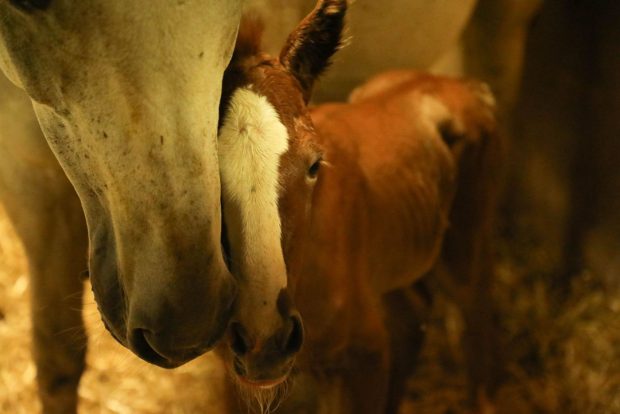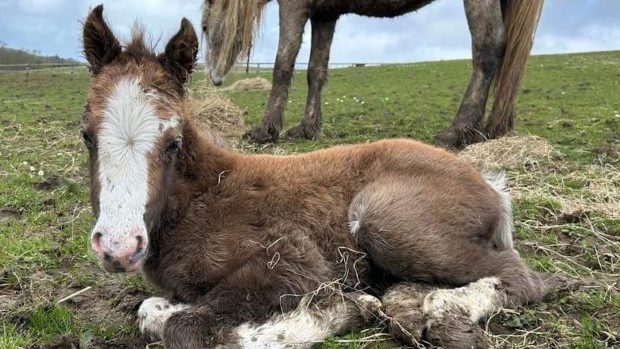Joint-ill in the foal is usually a result of a blood-borne infection (septicemia), often associated with problems such as lack of the vital first milk, known as colostrum, without which a foal will have inadequate immunity to fight off infection.
Bugs invade frequently via the umbilicus, resulting in the dreaded navel-ill, where the umbilical stump goes septic. Abscesses that form around the navel may act as a reservoir of infection that seeds infection elsewhere. For various reasons, the bones and joints are particularly susceptible to infection.
Joint-ill or septic arthritis tends to affect foals between five days and four months old. It is characterised by one or more painful swollen joints and lameness. Diagnosis involves tapping the joint to prove that it is infected and taking X-ray pictures to check for bone infection. Scanning can also help to check for associated navel-ill.
Effective treatment frequently involves admission to an equine hospital for treatment with high doses of powerful (and often costly) antibiotics, which on their own would be insufficient without also cleaning the infection out of the affected joint or joints.
This is usually done by “through and through” joint lavage, which involves inserting needles into either side of the infected joint and flushing it through with several litres of sterile saline. This can be performed under general anaesthesia or under sedation in some foals.
Affected joints are usually repeatedly lavaged on alternate days until there is a clear improvement. The number of times that it needs to be done varies and, if successful, a foal may only need to have one such treatment.
The large joints of the stifle, knee and fetlock are the most commonly affected.
The quicker the treatment starts, the better the chances of controlling infection and restoring a functional joint, before it is irreversibly damaged with incurable arthritic change.
A recent study of Thoroughbred foals has shown that a foal which develops septic arthritis is less likely to race than one of its siblings who did not get the infection. Of the foals which had joint-ill, almost half of those in which the infection was eliminated from the joint space before irreversible damage occurred, did go on to enjoy some type of racing career.
The study also showed that the prognosis for survival following early recognition and treatment is favourable, but that it is reduced by the presence of other disease processes outside the infected joint.
|
||
 |
||


 Get up to 19 issues FREE
Get up to 19 issues FREE TO SUBSCRIBE
TO SUBSCRIBE 


